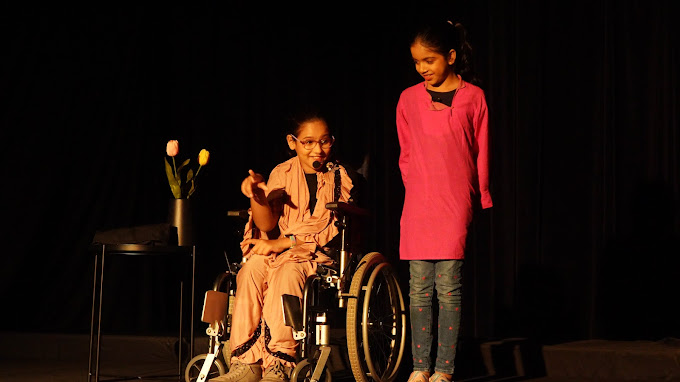How Online Acting Classes Compare To In-Person Training
Hello, dear readers! Today, I’m excited to delve into the dynamic world of youth acting classes and their essential role in fostering emerging writers. Under the umbrella of Tamasha’s ‘Spotlight On Skill’ initiative, spearheaded by Deepika Rajani, we strive to empower the aspirations and projects of up-and-coming writers from diverse backgrounds. This article will showcase different writing programs, outlining the opportunities they provide and guiding you to find the perfect match for your artistic ambitions.
Introduction
In the realm of performing arts, the shift towards online learning has become increasingly prevalent, with actors and aspiring performers embracing the convenience and accessibility of virtual platforms. However, as the traditional model of in-person training has long been the cornerstone of actor development, it’s natural to wonder how online acting classes stack up in comparison. Let’s explore the similarities, differences, and unique benefits of both approaches to actor training.
The Traditional Approach: In-Person Training
For generations, aspiring actors have flocked to acting studios, theaters, and conservatories to receive hands-on instruction from seasoned professionals. In-person training offers several distinct advantages:
1. Immediate Feedback and Interaction:
In a traditional classroom setting, actors benefit from real-time feedback and interaction with instructors and peers. This interpersonal dynamic fosters a sense of community, collaboration, and camaraderie among students.
2. Physical Presence and Kinesthetic Learning:
Acting often involves physical movement, expression, and interaction with space and other actors. In-person training allows students to fully immerse themselves in the physicality of their craft, honing their body language, spatial awareness, and stage presence.
3. Access to Facilities and Resources:
Acting schools and theaters provide access to specialized facilities, such as rehearsal spaces, performance venues, and costume and prop shops. These resources enrich the learning experience and allow students to explore the practical aspects of production.
4. Networking Opportunities:
In-person training facilitates networking and collaboration within the entertainment industry. Students have the chance to connect with industry professionals, attend live performances, and participate in workshops and showcases, opening doors to potential career opportunities.
The Emergence of Online Acting Classes
In recent years, the proliferation of high-speed internet and advancements in video conferencing technology have democratized access to performing arts education. Online acting classes offer several advantages of their own:
1. Flexibility and Convenience:
One of the most significant benefits of online acting classes is the flexibility they afford students. With asynchronous learning options and pre-recorded lectures, actors can access course materials at their own pace and schedule, accommodating busy lifestyles and conflicting commitments.
2. Global Accessibility:
Online acting classes transcend geographic barriers, allowing students from around the world to participate in training programs offered by renowned instructors and institutions. This global reach fosters diversity, cultural exchange, and exposure to different perspectives and techniques.
3. Cost-Effectiveness:
Online acting classes often come with a lower price tag compared to in-person training, as students save on commuting expenses, accommodation, and facility fees. Additionally, many online platforms offer subscription-based models or affordable payment plans, making quality education more accessible to a broader audience.
4. Individualized Learning:
Online platforms can tailor curriculum and instruction to meet the specific needs and goals of each student. Through personalized feedback, coaching sessions, and one-on-one consultations, actors receive targeted guidance and support from instructors, enhancing their growth and development.
Bridging the Gap: Blended Learning Models
While online acting classes offer undeniable advantages in terms of accessibility and flexibility, they are not without limitations. Some aspects of actor training, such as physical movement, improvisation, and scene work, may be more challenging to replicate in a virtual environment.
To address these challenges, many acting schools and instructors are adopting blended learning models that combine online instruction with in-person components. For example, students may participate in virtual lectures and discussions while attending occasional in-person workshops, rehearsals, or performances. This hybrid approach capitalizes on the strengths of both modalities, offering the best of both worlds to aspiring actors.
Conclusion
In the ongoing debate between online acting classes and in-person training, there is no one-size-fits-all answer. Each approach has its unique advantages and limitations, and the best choice ultimately depends on the individual needs, preferences, and circumstances of the student.
For actors seeking flexibility, affordability, and global connectivity, online acting classes offer an attractive alternative to traditional in-person training. However, those who value interpersonal interaction, hands-on instruction, and immersive learning experiences may still prefer the time-honored tradition of in-person training.
Ultimately, the emergence of online acting classes has expanded the landscape of actor education, providing aspiring performers with unprecedented opportunities for growth, development, and creative exploration. Whether online or in-person, the pursuit of excellence in the craft of acting remains a deeply personal journey, guided by passion, dedication, and a commitment to artistic expression.
Stay tuned for more insightful blogs on how drama can positively impact children’s lives!





































